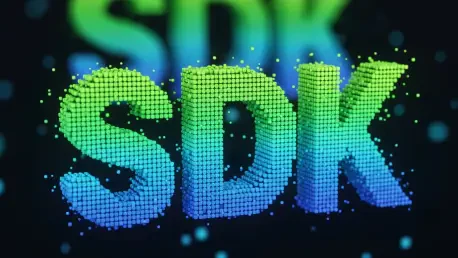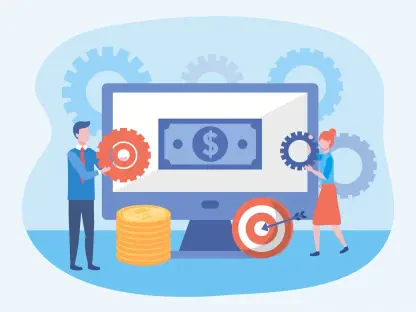Diving into the world of web game development, I’m thrilled to sit down with Anand Naidu, our resident development expert. With a mastery of both frontend and backend technologies, Anand brings a wealth of knowledge on coding languages and innovative solutions. Today, we’re exploring his insights on creating and scaling multi-platform tools for web games, focusing on the journey of an open-source SDK that bridges game engines with diverse platforms. We’ll touch on the inspiration behind such tools, the impact of community collaboration, the challenges of supporting multiple platforms, and the evolving landscape of web gaming.
How did the concept of a multi-platform SDK for web games first come to you?
The idea stemmed from seeing a real gap in the web gaming market. Developers were struggling to connect their game engines with various platforms, and there was no unified solution to streamline that process. It was frustrating to watch talented creators spend so much time on technical integrations instead of focusing on their game design. I wanted to build something that could act as connective tissue, making it easier to launch games across different channels without reinventing the wheel each time.
What was your experience like working on this project independently before joining a larger team?
Working solo was both liberating and limiting. I had full control over the vision, but progress was slow. Without a team, I couldn’t tackle big challenges or test as thoroughly as I wanted. The biggest hurdle was probably resource constraints—there’s only so much one person can do in terms of coding, debugging, and outreach. It taught me a lot about prioritization, but I knew the project needed more hands to truly take off.
How did partnering with a larger organization change the trajectory of the SDK?
Joining forces with a bigger team was a game-changer. Suddenly, I had access to better infrastructure, more developers to brainstorm with, and clearer priorities. It felt like the project went from a slow crawl to rocket speed. We could iterate faster, tackle complex integrations, and focus on scaling. Having that support allowed us to refine the SDK’s direction and aim for broader impact in the web gaming space.
What motivated you to make the SDK open-source?
I’ve benefited immensely from open-source tools throughout my career, and I felt a deep gratitude toward those communities. Making the SDK open-source was my way of giving back. I also believed it would foster collaboration—developers could contribute ideas, report issues, and help shape the tool to meet real-world needs. I hoped it would create a vibrant ecosystem where everyone could benefit from shared knowledge.
How has opening up the SDK influenced its growth and community adoption?
The impact has been incredible. Open-sourcing it led to rapid adoption because developers saw the value in a free, accessible tool. We’ve had contributions from all over, from bug fixes to feature suggestions. For instance, a small group of indie developers helped us optimize certain integrations, which we wouldn’t have prioritized otherwise. Community feedback has been invaluable in keeping the SDK aligned with what users actually need, pushing its evolution in unexpected but exciting ways.
Why do you think more mobile and PC game developers are turning to the web market now?
There’s a growing realization that the web offers unique opportunities. It’s a quick way to reach new audiences without the lengthy process of app store approvals or platform-specific builds. Developers can test ideas in browsers almost instantly, which is a huge advantage. Plus, the web is becoming a viable distribution channel as browser technology improves. Tools like ours help by simplifying the transition, letting developers focus on their games rather than technical barriers.
What are some of the toughest challenges when integrating support for new platforms?
Every platform comes with its own quirks. Sometimes, features don’t work as advertised, or the documentation is so sparse that we’re left figuring things out through trial and error. I remember one instance where a platform’s API behaved completely differently from what was documented, costing us weeks of troubleshooting. It’s frustrating, but we’ve learned to adapt by building robust testing processes and reaching out to platform communities for insights when official resources fall short.
How do you ensure a smooth developer experience despite the backend complexity of multiple platforms?
It’s all about hiding the mess behind a clean interface. We spend a lot of time designing an intuitive API that feels consistent, no matter the platform. On the backend, we handle the chaos—whether it’s reconciling different behaviors or managing updates—so developers don’t have to. We also prioritize feedback loops, constantly asking users where they’re getting stuck and refining the experience. Balancing that complexity with simplicity is tough, but seeing developers use the tool effortlessly makes it worth it.
Who do you think benefits most from a tool like this, and how does that vary across different types of developers?
Honestly, it’s useful for game developers of all sizes, but the benefits shift based on resources. Indie devs save huge amounts of time since they don’t have to build multi-platform support from scratch. Larger studios, on the other hand, gain efficiency and cost savings, allowing quicker releases. It’s about leveling the playing field—whether you’re a solo creator or a mid-sized team, you get to focus on making great games instead of wrestling with integrations.
What is your forecast for the future of web gaming and tools like this SDK?
I see the lines between web, mobile, and even PC gaming continuing to blur. Web games are already rivaling mobile in terms of functionality and user experience, and I think that trend will accelerate. Tools like ours will become essential infrastructure for cross-platform distribution, helping developers publish and monetize without rebuilding for every format. My hope is that we’ll see deeper platform compatibility and more automation, making it even easier for creators to reach global audiences through the web.









